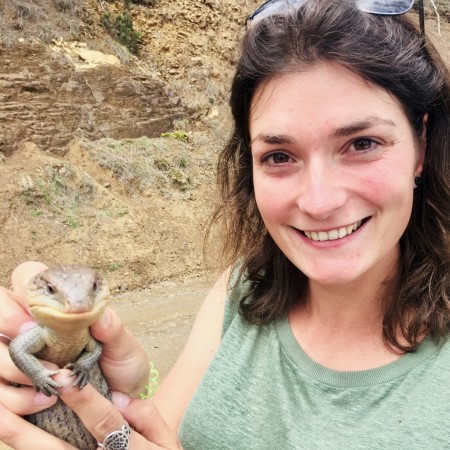Forest and woodland areas have seen significant declines due to historical and current land use practices. Restoration of these areas requires a solid foundation in scientific research. Projects in this research area focus on developing techniques for restoration that are cost effective, successful and provide the structural complexity of the original landscape. There is also a focus on ensuring that restoration is conducted that will be able to adapt to future climate conditions, with studies examining the role of species and provenance choice on restoration success.
Current Projects
Forty spotted pardalote and manna gum: joining the spots to save an Australian endangered bird species
Supervisors: Associate Professor Julianne O'Reilly-Wapstra, Dr Geoff While, Dr Peter Harrison
Understanding how flora and fauna interact across both ecological and evolutionary time scales represents a major challenge that is fundamental for biodiversity conservation.
This project will address this issue by investigating what drives variation availability and quality of food for one of Australia’s most endangered birds, the forty-spotted pardalote (Pardalotus quadragintus). The forty-spotted pardalote relies on manna, a sugary exudate produced by manna gum (Eucalyptus viminalis). Manna is a key resource for a range of woodland birds, however, the forty-spotted pardalote is the only species that actively stimulates manna production through its unique mining behaviours. This interaction could have a range of cascading effects on other species, communities and even the wider ecosystem. Thus, it is critical to understand what factors underpin variation in manna quantity and quality, and how these factors drive pardalote behaviour, fitness and ultimately the community more broadly.

Provenance choice in native forest management
Supervisors: Dr Peter Harrison, Assoc Prof Julianne O’Reilly-Wapstra and Dr Dean Williams
Forest tree species are expected to be negatively affected by climate change as unprecedented selective pressures cause an increase in local extinction events. This project will examine the influence of seed source (provenance) choice on the performance and resilience of eucalypt forest revegetation by generating new knowledge on the genetic basis of climate adaptation in the ash eucalypts (Eucalyptus obliqua, E. delegatensis, E. regnans).
Signals of adaptation will be detected at three genetic levels. At the individual-level, differences in gene expression through epigenetic modifications following a climate stress event will be examined using a controlled glasshouse experiment and an integrated DNA-methylation and metabolomics approach. At the population-level, changes in allele frequency of single nucleotide polymorphisms (SNPs) along climatic gradients will be uncovered using a genome-environment association analysis to identify regions and underlying gene families putatively associated with climate adaptation. At the species-level, parallel responses of the ash eucalypts to climate will be examined through a joint phenotype-genotype approach to understand the extent to which climate adaptation can be predicted and extrapolated to other species. The performance of seed will then be experimentally tested using field trials to determine early establishment transfer functions.
This project will contribute to our understanding of forest tree adaptations and their vulnerability to future climate stress, and provide an evidence-based framework for seed-sourcing to promote resilient forest revegetation in the face of climate change, thus improving the management of forest resources globally.

A new disease in disguise: ecology and epidemiology of the second transmissible cancer in Tasmanian devils (DFT2)
Supervisors: Dr Rodrigo Hamede, Dr Scott Carver, Assoc Prof Julianne O'Reilly-Wapstra
This project will define the characteristics of the 2nd transmissible cancer in Tasmanian devils, reveal how epidemic processes interact with devil/tumour evolution and identify the adaptive capability of devils against both cancers. Findings will help to evaluate if management interventions are required, or if devil populations can co-exist with transmissible cancers. Additionally, this top predator plays a pivotal ecological role, therefore research that aids its recovery provides ecosystem stability. Emerging infectious diseases are considered significant threats to biodiversity globally, making the outcomes of this study directly applicable and beneficial to other wildlife disease management.
